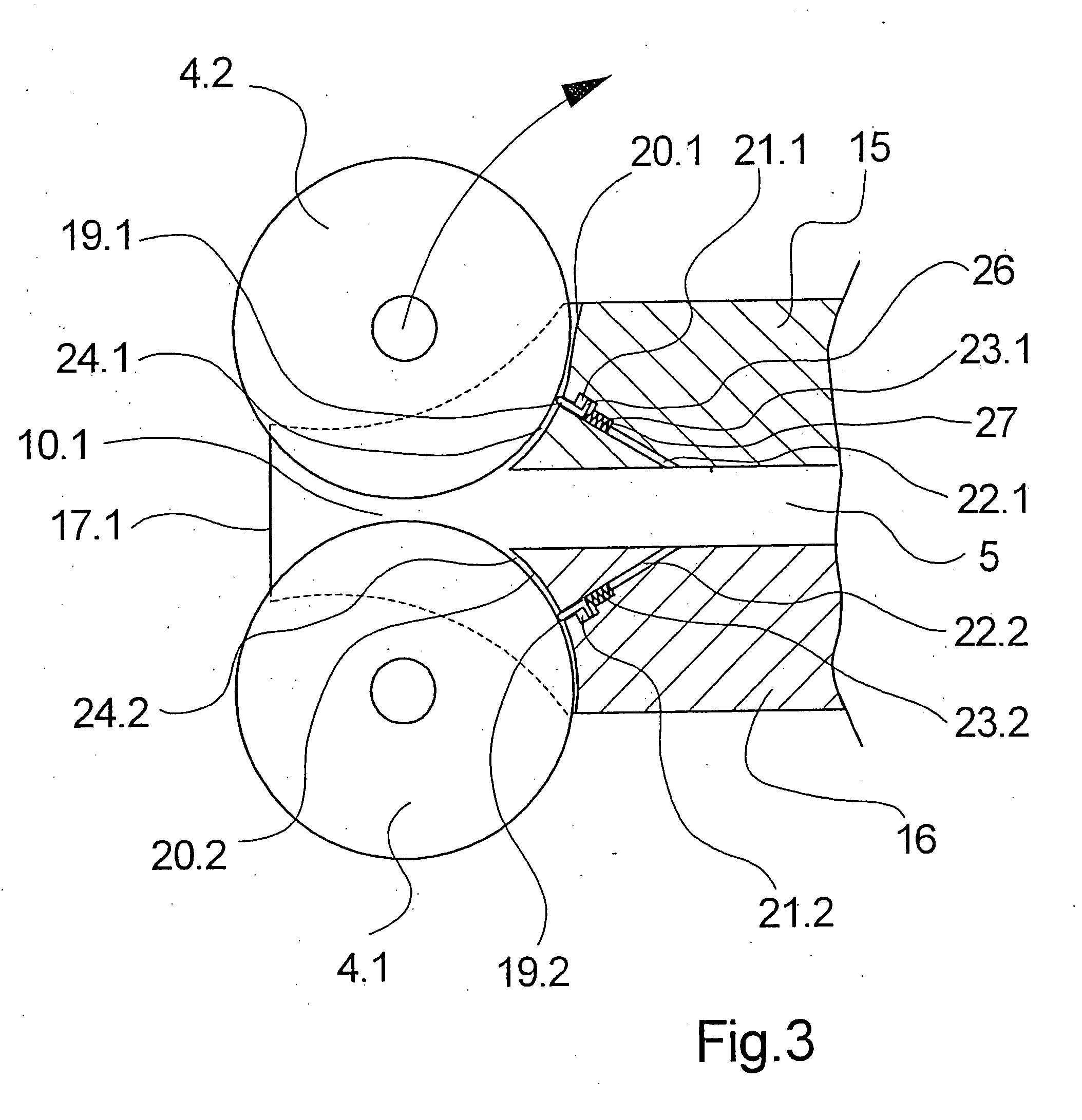Device for the steam treatment of a moving fiber strand
a technology of moving fiber and steam treatment, which is applied in the direction of cleaning using liquids, other washing machines, textiles and papermaking, etc., can solve the problems of hardly being able to carry out precise conditioning of fiber strands, unable to move sealing rollers, and requiring considerable sealing efforts, so as to achieve constant possible sealing conditions, improve the efficiency of nip sealing, and avoid the effect of slipping
- Summary
- Abstract
- Description
- Claims
- Application Information
AI Technical Summary
Benefits of technology
Problems solved by technology
Method used
Image
Examples
Embodiment Construction
[0027] The present invention now will be described more fully hereinafter with reference to the accompanying drawings, in which some, but not all embodiments of the invention are shown. Indeed, the present invention may be embodied in many different forms and should not be construed as limited to the embodiments set forth herein; rather, these embodiments are provided so that this disclosure will satisfy applicable legal requirements. Like numbers refer to like elements throughout.
[0028]FIGS. 1 and 2 show different views of a first exemplary embodiment of the device according to the invention. FIG. 1 schematically shows a lateral view of the exemplary embodiment while FIG. 2 shows a front view thereof. The following description refers to both the figures unless express reference is made to any one of the figures.
[0029] The exemplary embodiment comprises an elongated steam chamber 1, which is substantially provided with a cylindrically hollow shape. The steam chamber 1 is connected...
PUM
 Login to View More
Login to View More Abstract
Description
Claims
Application Information
 Login to View More
Login to View More - R&D
- Intellectual Property
- Life Sciences
- Materials
- Tech Scout
- Unparalleled Data Quality
- Higher Quality Content
- 60% Fewer Hallucinations
Browse by: Latest US Patents, China's latest patents, Technical Efficacy Thesaurus, Application Domain, Technology Topic, Popular Technical Reports.
© 2025 PatSnap. All rights reserved.Legal|Privacy policy|Modern Slavery Act Transparency Statement|Sitemap|About US| Contact US: help@patsnap.com



